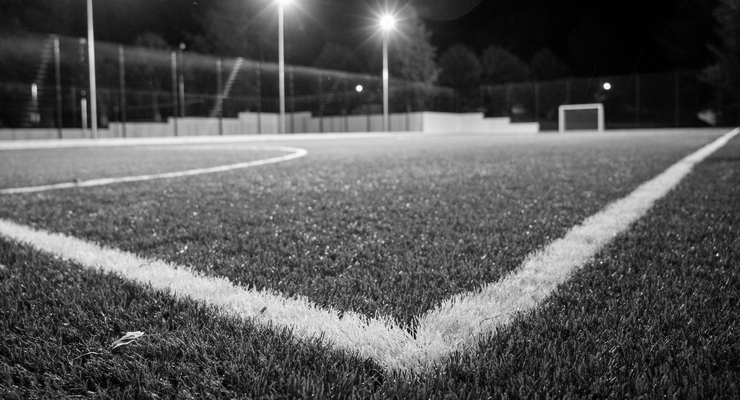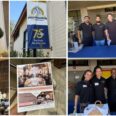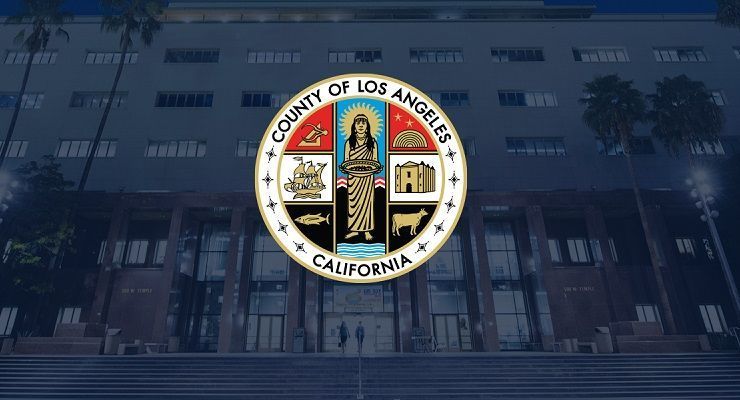
Pasadena Now’s announcement in Monday’s edition that a “City Panel will Assess the Future of Artificial Turf Fields at Public Facilities” is a critical opportunity to address a deeply misunderstood issue. While cost analyses often favor artificial turf over natural grass based on short-term expenses and maintenance, such comparisons fail to account for the significant environmental and health costs of artificial turf. As Pasadena seeks to align with its Climate Action Plan to reduce climate emissions by half by 2035, the use of artificial turf, particularly in the underserved communities adjacent to Villa Park and Jackie Robinson Center where these city fields sit, demands a closer examination.
There is a growing crisis of the environmental impacts produced by artificial turf. It contributes heavily to the urban heat island effect. Satellite imagery starkly reveals the heat intensification from these fields. Temperatures were recorded on several days this past August in excess of 190 degrees at Jackie Robinson field. This extreme heat not only endangers athletes but also raises surrounding temperatures, increasing energy use, water use (for cooling it), and contributing to greenhouse gas emissions.
Unlike natural grass, which captures carbon dioxide through photosynthesis and provides cooling benefits, artificial turf absorbs and radiates heat, exacerbating global warming. It also strips away habitats for local wildlife, further reducing the natural biodiversity that helps stabilize ecosystems.
Additionally, artificial turf sheds microplastics, which pollute soil and waterways and eventually makes its way into oceans, harming marine life. The health impacts of microplastic exposure on humans is still being studied, but initial findings point to significant risks, including links to various cancers — an alarming trend noted in athletes, particularly soccer goalies.
Artificial turf is not biodegradable and cannot be recycled, inevitably ending up in landfills where it contributes to methane emissions — a potent greenhouse gas. Over time, the toxic chemicals embedded in turf materials can leach into the soil and potentially into groundwater, further threatening environmental and human health. Studies increasingly highlight the dangers of close contact with artificial turf, especially for children and athletes.
There is no doubt that Pasadena faces a shortage of athletic fields and that increasing access to sports is essential for youth development and public health. However, doubling down on artificial turf as a solution is shortsighted, counter-productive, and ultimately dangerous to supporting a safe and healthy community. Instead, the city must explore sustainable alternatives that prioritize both environmental stewardship and community well-being.
It is our shared responsibility to problem solve for long term sustainability over short term convenience. As we face the existential challenge of climate change, every decision matters.
Choosing artificial turf may seem like a quick fix for field shortages, but its environmental and health costs far outweigh its benefits. Pasadena can do the right thing and lead by example, championing solutions that align with the city’s vision for a healthier, more equitable, and sustainable future.
It’s time to rethink artificial turf — not just as a policy decision, but as a moral imperative. Let’s work together to create a greener, healthier Pasadena for generations to come. As noted in Monday’s article, The Recreation and Parks Commission will meet at 6:00 p.m. on Tuesday, December 3, at the City Yards Public Works Building Second Floor, 233 West Mountain Street.
The public can submit comments by email to shouser@cityofpasadena.net or in person during the meeting.
Suzanne York is a retired Pasadena Unified School District teacher and a member of Pasadena’s Environmental Advisory Commission and the Hahamonga Watershed Park Committee.



















